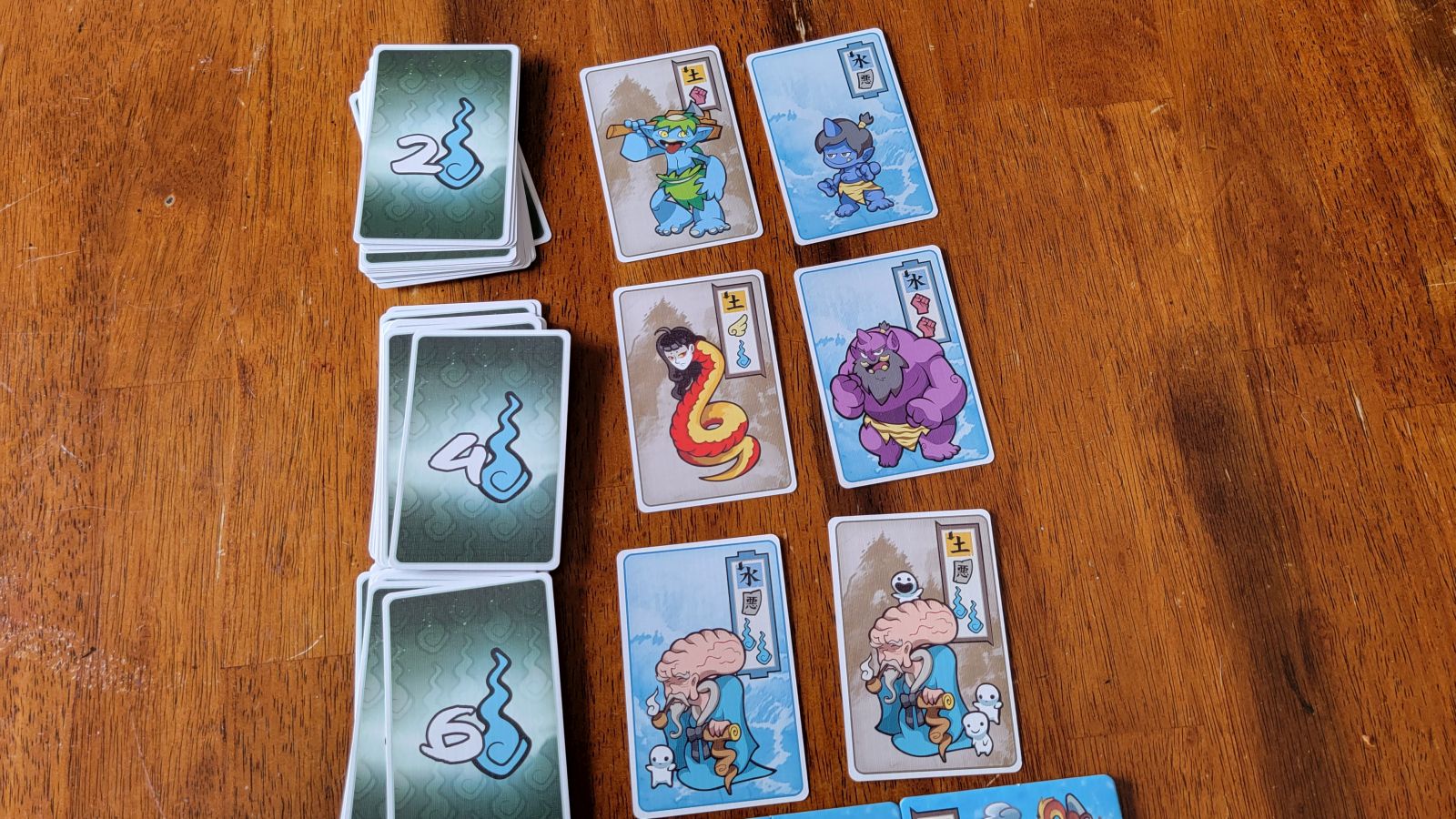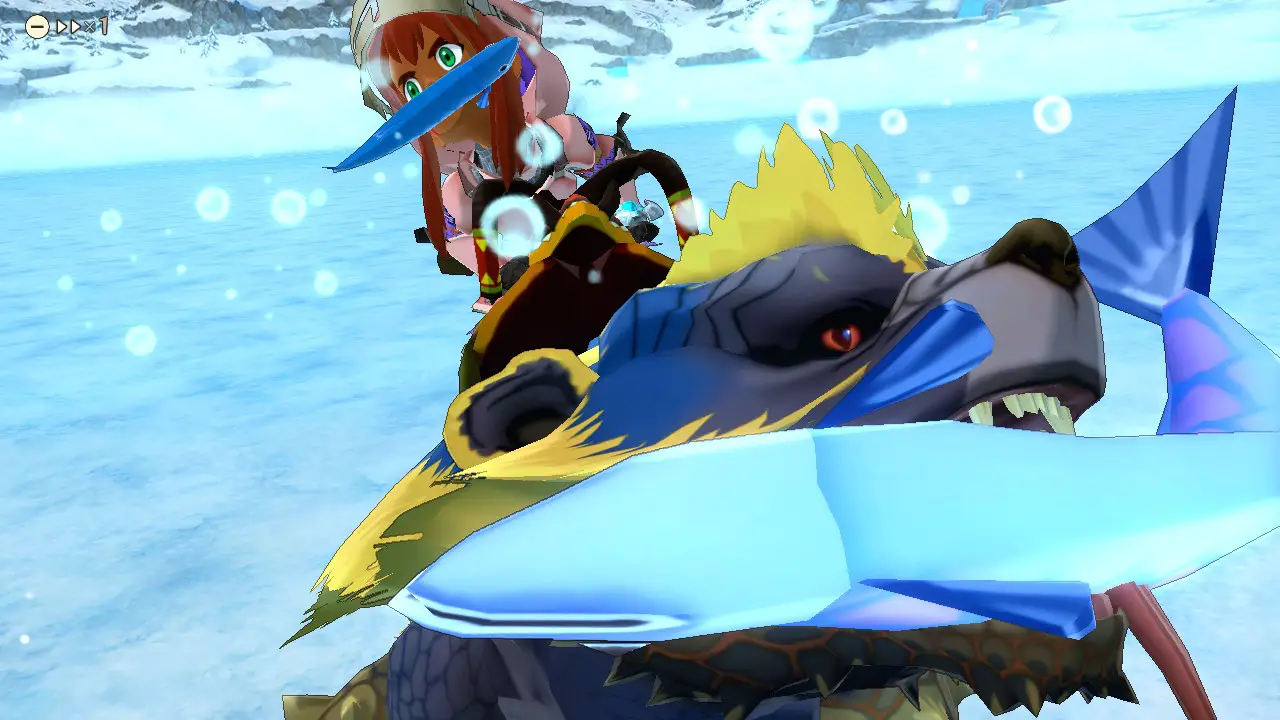What is better than getting a parade of cute and awesome creatures that any and everyone can appreciate? Well what if I told you those creatures were actually spirits/demons/monsters? That is where the term yokai comes from. Here the game Night Parade of a Hundred Yokai takes those thoughts and throws them down on the table in board game form. Night Parade of a Hundred Yokai is a game designed and illustrated by Luís Brüeh and published by Brueh Games, is a game for one to four players. It boasts asymmetrical factions, some area control mechanisms, and cute, amazing yokai for everyone to enjoy.
Night Parade of a Hundred Yokai sees players vying for control of the throne of the yokai. The game continues until a singular player has placed all of their Torii gates. Then, victory points are counted and a new king of the yokai is crowned. A Torii gate is placed once a player has played a number of yokai meeples equal to the required number on any given island the player aims to control. However, each island can only hold so many Torii gates, meaning islands to place your gates on are on a first come first serve basis.
What does this mean for playing through a game of Night Parade? Well, players take turns taking actions based on their sets of yokai. Each player starts with three different scrolls corresponding to the different elements of water, wood, and earth. These elements are the different types of yokai that you can employ in your quest to take the throne of the yokai and become the new yokai king.

With these three different scrolls come the yokai that go into that scrolls’ parade. Each parade can be used for an activation on a turn. Only one parade can be activated per turn, and no parade can be activated multiple times in a row. Now what does a parade mean exactly as far as the game goes? Well, a parade is the grouping of the same element yokai in order to take the actions depicted on the yokai card. These grouped yokai cards are the driving force of a player’s turn.
A few different symbols are on each yokai card, which tell you what actions you can take as a player. Each yokai has an element symbol on them which tells you to place a yokai on a corresponding island that matches the element of the parade. The various symbols correspond to knocking a player off an island, movement, generating spirit, among other symbols.
When players activate one of their three parades, and use all of the actions in order, then if they qualify to place a Torii gate, they may then place one. After that, the player looks at the amount of spirit they have gained, along with any talismans they have earned during their turn. The player uses those currencies to hire more yokai from the spirit dimension. This further increases the strength of each parade a player has and gives them more actions in a single turn. After that phase is complete, then the active player may trade talismans in increments of two for 1 spirit, ending their turn and signaling the next player to take their turn.

In the center of the set of islands is the fire element island. This is where the throne of the previous yokai king would sit. The fire island, unlike the other islands, requires more yokai in order to place a Torii gate. The benefit of placing a Torii gate here is one of the island-specific rewards that the game offers. Some islands offer first come first serve rewards for the player that places a Torii gate on an island first, like extra spirit, or victory points at the end of the game. Lastly, each player has a hidden goal that they are striving to achieve in order to gain victory points. The points are how the new king of the yokai is determined, and if you have not worked towards the secret goal, then you most likely will not score many points.
After one play, it would be easy to say there may be some balancing issues. While initially seeming like it may have issues, Night Parade of a Hundred Yokai presents a fairly balanced game, while also providing each yokai faction that players choose fairly unique and fun asymmetrical abilities. That being said there are at times some inequalities. Some turns feel like all of the other players gang up on the one player that seems to be running away with the game, or sometimes a player swoops in at the last second to max out an island’s Torii gates.

Yet after numerous plays, and countless Torii gates placed, it became clear that Night Parade gives players all the power. It is make or break based on the players and not so much the game. In my first game, it was definitely easy to become a little frustrated when multiple players started targeting me. The depth is there, though, and if players take advantage of the asymmetry, then there is a great experience to be had here.
This brings me to what does not work as well in the game. The islands could certainly be a bit bigger. Especially when playing a full four player game, the islands get crowded fast. A couple of rules could use a bit more explanation, but are overall serviceable. There could have been a few more pieces included in the game, maybe another meeple or two for each faction, and definitely some more spirit tokens/talisman tokens. Not that they are completely necessary, but it would be a quality of life improvement for the game.

Overall, Night Parade of a Hundred Yokai presents a fun theme, some adorable yokai meeples for each of the factions, and a memorable experience playing what is probably one of my least favorite mechanisms in area control. That being said, Night Parade could use a bit more polish and benefit from some small quality of life improvements. All in all, Night Parade of a Hundred Yokai is a fun foray into the realm of the yokai for players both familiar and unfamiliar with what a yokai is.
PROS
- Adorable asymmetrical yokai meeples that make people want to play
- Unique and well thought out asymmetrical abilities for each faction provides depth
- Rules and game are fairly simplistic in nature, allowing players to get to playing rather than getting hung up on a rules clarification
CONS
- Small amounts of pieces included in box, could use some more
- Island components could be a bit bigger to accommodate meeples and Torii gates
Rob is an aspiring writer that went to school for English and continues that with his passion for the English language and writing. Joining the two worlds happened when he was introduced to board games and has not looked back. Rob likes all sorts of games and is willing to give most games a fair shake.
See below for our list of partners and affiliates:

 1 year ago
95
1 year ago
95







